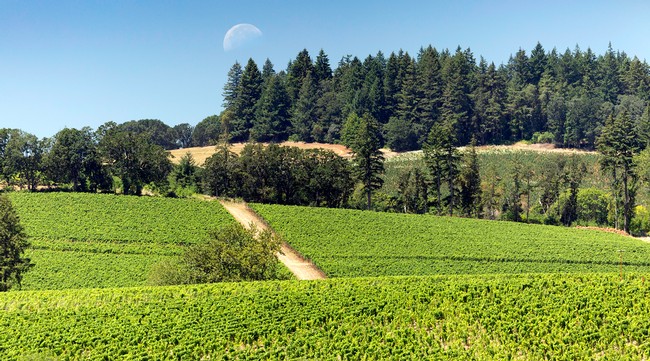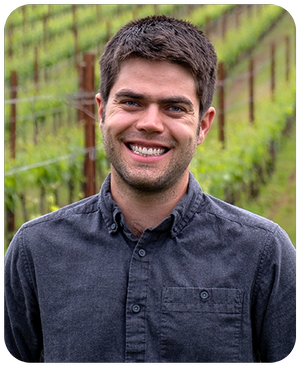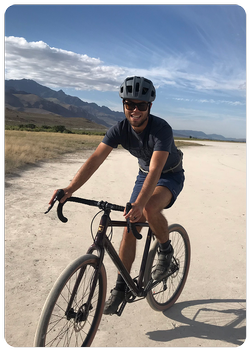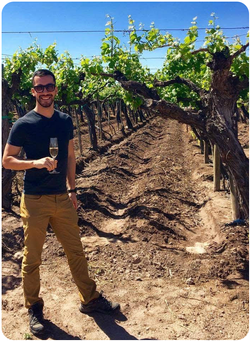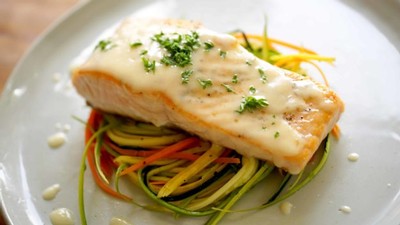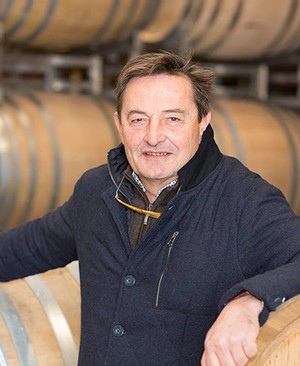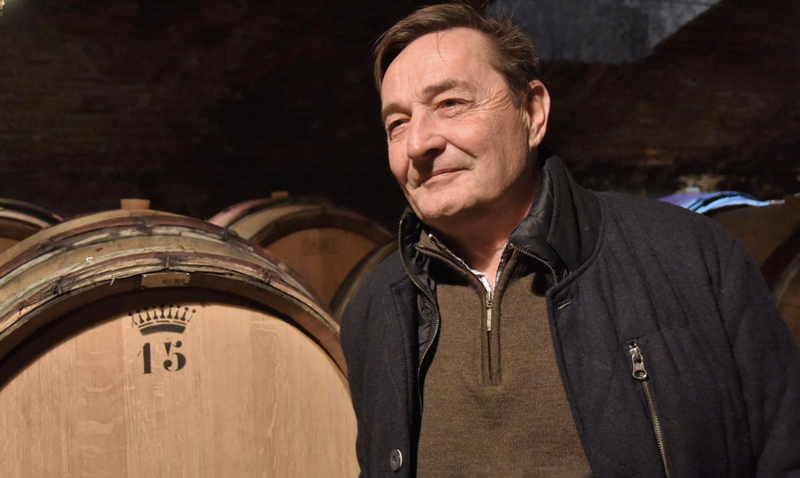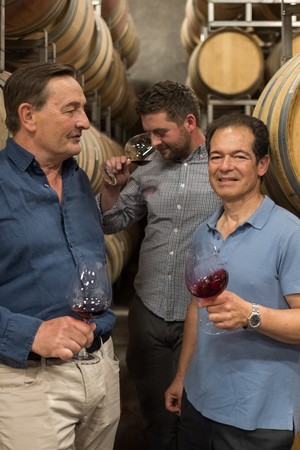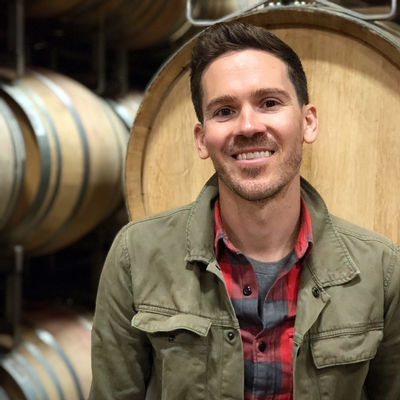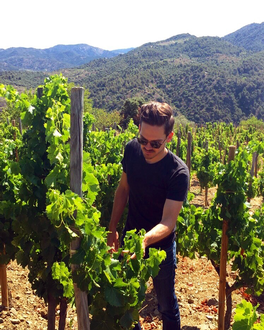The Library Release of the Inaugural 2016 Lingua Franca Estate Pinot Noir
Larry Stone, Thomas Savre, and Dominique Lafon first partnered after overseeing the now world-famous Seven Springs Vineyard. Having tasted wines sourced from Seven Springs since the early 90s, Larry felt certain that this small pocket within the Eola-Amity Hills was a special place, unlike no other in the Willamette Valley.
He felt so confident that when a plot of land was offered for sale next door, he didn’t hesitate. In fact, he auctioned off his entire personal wine collection as part of the down payment with plans to plant a vineyard.
When Dominique learned that Larry secured the property, and had already planted the 66 acres of Pinot Noir and Chardonnay, he recommended that they start producing wine together. Thomas agreed to join them and turn its sloping hills and ideal east-facing aspect into the great wine of Lingua Franca Estate Vineyard.
This year, we celebrate the five-year anniversary of the first bottling of our Estate Pinot Noir. Half a decade later, we continue to be captivated by the youth and quality of the first award-winning wine that was blended, labeled, and released as Lingua Franca Estate Pinot Noir.
Shop our Library Release by clicking here. Complimentary shipping applies to case purchases!
Meet the Team, Part 11
Meet
Chase Martin
Cellar Hand
Born and raised in western Colorado, Chase found his way to the Pacific Northwest during college. He graduated from Whitman College in the heart of Washington’s Walla Walla wine country, earning a degree in Chemistry and Geology with a concentration in groundwater modeling. Chase fell in love with the wine industry while at school, and decided to use his scientific background to work in vineyard data collection and analytics. After graduating, he worked in Napa and Sonoma counties for a company focused on helping winegrowers improve grape quality and adapt to climate change using plant-based data solutions. In 2019, he moved to Portland with the dream of trying his hand in wine production. That same Fall, Chase worked the harvest as an intern here at Lingua Franca before joining the team as our full time Cellar Hand.
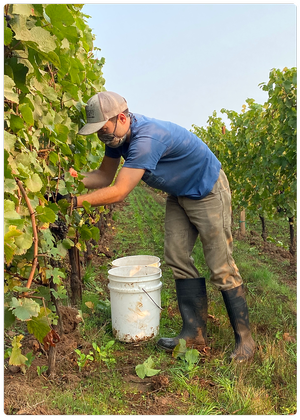
What’s a favorite memory from the 2019 harvest, your first harvest with Lingua Franca?
"I have a distinct memory from the 2019 harvest when our Assistant Winemaker, Kim, and a fellow harvest intern at the time, Samantha, and I spent an entire day topping up each barrel of individually fermenting chardonnay. The fermentations were bubbling away, so the cellar was warm and cozy and had the wonderful smell of barrel-fermented chardonnay. We had pop music playing over the speaker, and we laughed and danced as we worked. That was an inspiring moment where I realized just how much energy and love our team puts into each barrel of wine. I’m excited to work everyday with that kind of positive energy in the cellar!"
What do you enjoy doing during your spare time outside of work
"While not producing wine, drinking wine, reading about wine, or listening to wine-related podcasts on my commute, I most enjoy spending time in the outdoors with friends and family. Whether on foot, ski, bike, or boat, I love exploring the wild corners of Oregon and beyond with my wife, Molly. Most recently we’ve been spending a lot of time gravel biking in many of our local Oregon forests, and dreaming up a post-harvest rafting and fly-fishing adventure."
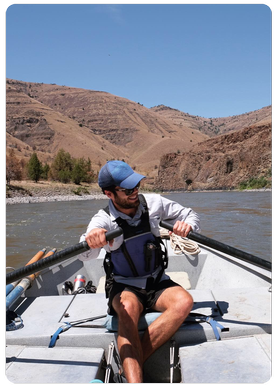
What are you enjoying drinking these days?
"As fall settles in, the cold temperatures remind me of time spent among the golden Aspen trees of southern Colorado and northern New Mexico. One of my favorite go-to drinks for fall is called a Chimayó, a cocktailfrom the Rancho de Chimayó restaurant nestled in the hills between Santa Fe and Taos. Fresh apple cider is the key ingredient, mixed with your favorite repasodo tequila, some lemon or lime, and finished with crème de cassis. It is my drink of choice for sitting on the deck in the crisp fall sun."
What’s your favorite go-to wine accessory at home?
"While I could highlight a favorite glass shape or corkscrew, to be honest, my favorite wine accessory wandered its way into my life two years ago at Christmas thanks to my older sister. My family loves cats, which my sister chose to celebrate by gifting me small, colorful, rubber cats that curl around the stem of a wineglass to help its user keep track of it. While perhaps not the classic wine accessory they are certainly unique and helpful during a dinner party. I can’t wait to use them again when we can someday gather in groups."
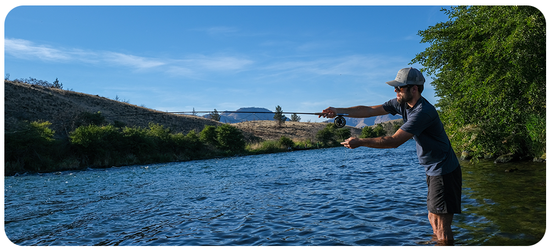
Meet the Team, Part 10
Meet
Michael Cheng
DTC & Hospitality Manager
Michael, originally from Minnesota, was first exposed to fine wine while in Europe as part of his studies of Spanish Language and Global Cultures. Indulging his lifelong interest in gastronomy, he quickly became a savvy and knowledgeable consumer. Uninspired by office work, Michael set his mind to pursue work in the wine industry, achieved the WSET Level 3, then relocated to Oregon. His studies deepened through his work in Wine Education with one of the Willamette Valley’s founding producers, including working the 2018 harvest, before joining the Lingua Franca team in early 2019.
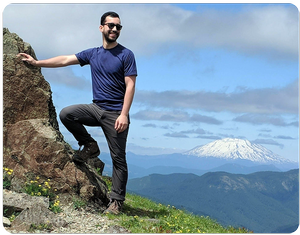
What do you enjoy doing during your spare time outside of work?
"I enjoy spending time in nature, particularly in the mountains. Travel, whenever possible, has always been important for me as a way to widen my perspective and explore the world. At the beginning of this year, I spent a few weeks in Colombia, and look forward to my next adventure when travel is once again possible."
What is one of your favorite memories of enjoying wine?
"I was in Milan in 2015 and went out for Aperitivo (happy hour) at Cantine Isola, an old wine shop and bar. I ordered a glass of some old Amarone, ate from the communal platters of antipasti, and chatted in very broken Italian with the various business people, who had just gotten off work and were meeting to enjoy a beautiful evening together. I was left feeling awestruck by the warmth and joy in the room, as family, friends, and even American strangers gathered to share food and drinks."
What are you drinking these days?
"Bubbly. In trying times, it’s important to find times of joy and celebration, and I find that popping corks and pouring sparkling wine always lifts my spirits. My go-to domestic producer is the reliable Roederer Estate Brut (half-bottles for guilt-free drinking), but Old World classics are hard to beat."
What’s your favorite go-to wine accessory at home?"Perhaps not an accessory, but the books The Oxford Companion to Wine and the World Atlas of Wine are indispensable tools to bring me greater understanding of whatever is in my glass."
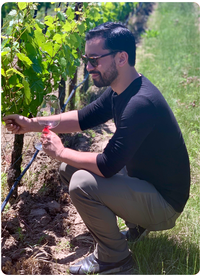
You’re studying for your WSET Diploma. Why are you interested in pursuing this certification?
"The WSET Diploma is a certification that provides an understanding of the global wine industry that is both broad and deep. The strong academic focus of this program appeals to my drive for deep understanding - making connections and knowing the “why” and “how” of things. I hope to continue my studies in pursuit of the Master of Wine qualification."
Click here to inquire about a tasting of our current releases with Michael.
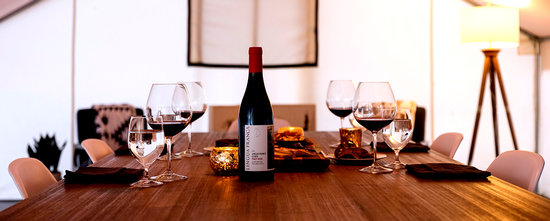
Meet the Team, Part 9
Meet
Amanda McNichols
Club Membership Manager
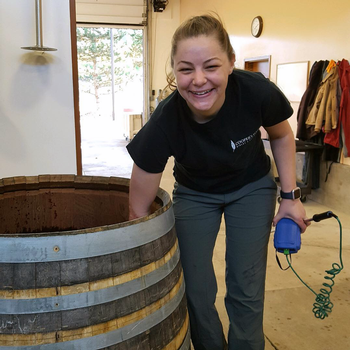
Amanda was born and raised in Tampa, Florida, where she was first exposed to the world of wine while working in a high-end restaurant to help pay for college. She was eager to learn more, so while pursuing her Bachelor’s Degree, she travelled to Florence, Italy to continue her wine studies at th e Apicius School of Hospitality. Upon graduation, she continued serving wine on the weekends at a local tasting room, while also working full-time for the Florida Legislature. She left the political world for good in 2018 after earning her Wine & Spirit Education Trust Level 3 certification. Amanda worked the 2018 harvest in the Willamette Valley at Trisaetum and has since decided to make Oregon her permanent home. She was drawn to Lingua Franca after falling in love with the Bunker Hill Chardonnay in a blind tasting.
What was your ‘epiphany’ wine and what do you remember about that moment?
"In late 2017, I attended classes for my Wine and Spirit Education certification in Tampa. Our instructor was a Riesling fanatic, so she included a b ottle of 2015 Weingut Clemens Busch Marienburg Falkenlay Riesling in our week of 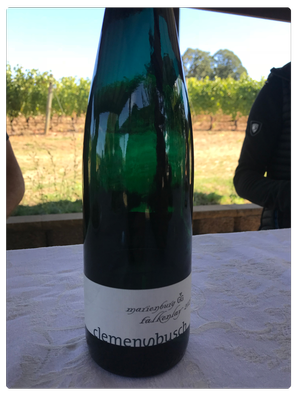 blindtastings. That first sip stopped my world. Less than a year later, in September of 2018, I had the distinct privilege of “calling” this wine from top to bottom during a blind tasting at Trisaetum. Weingut Clemens Busch is a small, biodynamic winery in the Mosel that I one day hope to visit. I also tasted a Lingua Franca Chardonnay for the first time in one of those daily blind tastings, and it was in that moment that I decided I’d do whatever it took to become part of the LF team!"
blindtastings. That first sip stopped my world. Less than a year later, in September of 2018, I had the distinct privilege of “calling” this wine from top to bottom during a blind tasting at Trisaetum. Weingut Clemens Busch is a small, biodynamic winery in the Mosel that I one day hope to visit. I also tasted a Lingua Franca Chardonnay for the first time in one of those daily blind tastings, and it was in that moment that I decided I’d do whatever it took to become part of the LF team!"
What are you enjoying drinking these days?
"Cava! Sparkling wines have always been a favorite while relaxing at home. Also, I often enjoy simple apertif cocktails like Cocchi Americano and soda with a twist of orange."
What do you enjoy doing during your spare time outside of work?
"If I’m not at work you'll often find me in one of two places: on our 20-acre 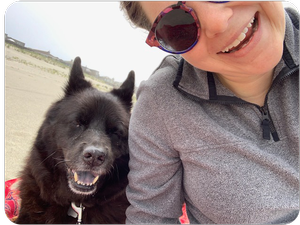 farm caring for our many animals, or out hiking with my pup, Ziggie. I like to search for waterfalls out on the Oregon Coast."
farm caring for our many animals, or out hiking with my pup, Ziggie. I like to search for waterfalls out on the Oregon Coast."
What are you looking forward to taking on now that you’ve stepped into the Club Membership Manager role?
"The most exciting part about my new role as Club Membership Manager is our members! As I get to know them, I'm reminded of the unique connection we all have — a passion for the exceptional wines our winemaking team works tirelessly on. Getting to know our members fuels me to find ways to constantly innovate and elevate our wine club experience. My goal is to translate the labor and love for the extraordinary piece of land we’ve found in more ways than the wine alone. Every day that I walk onto our estate I feel inspired; there is an energy here that I am eager to share, especially with those that haven't yet seen it first hand."
Brandon's Salmon with Lemon Beurre Blanc Recipe
Ingredients (Serves 4):
-
(4) 4 oz salmon filets
-
2 tbls canola oil
-
3/4 cups dry white wine such as Avni Chardonnay
-
1/2 cup heavy cream
-
1 shallot, finely diced
-
8 oz (two sticks) unsalted butter divided into 1/2 inch cubes
-
2 tbls fresh squeezed lemon juice
-
Zest of one lemon
-
Kosher salt (to season salmon and to taste for the Beurre Blanc)
Preparation:
For the Beurre Blanc:
-
In a medium sauce pan, combine the shallots and wine. Bring to a boil and reduce heat to medium. Reduce by 1/3.
-
Add the cream and reduce by 1/3 again.
-
Over low heat, add the butter slowly, one cube at a time and constantly stir to incorporate. Do not let the sauce boil - it will separate.
-
After all of the butter has been incorporated into the sauce, add the lemon juice and season with salt to taste.
For the Salmon:
-
Preheat oven to 375F, season salmon with salt to preference.
-
In a large, oven-safe skillet, heat on high and add the canola oil. Once the oil is hot, turn the heat down to medium-high, add the salmon (skin side down), and sauté untouched for 2 minutes.
-
Carefully flip the salmon over and move the pan to the oven and roast for 8 to 10 minutes (for med-rare to medium).
-
Plate the salmon skin side down on the plate, add the lemon zest to the Beurre Blanc, quickly incorporate and sauce the salmon.
Photo Credit: Entertaining with Beth
Meet the Team, Part 8
Meet
Dominique Lafon
Consulting Winemaker
Best known as the namesake, director, and winemaker of one of the great estates of Meursault, Dominique is a descendant of Jules Lafon, who created the revered wine festival, La Paulée. After taking over his family's domaine in the 1980s, Dominique revitalized its red and white winemaking approach. In 2015, after a long friendship with Larry, Dominique joined Lingua Franca as Consulting Winemaker and works with the team to oversee winemaking and vineyard operations.
Can you tell us about your first memory of enjoying wine? What was your first job in the wine industry?
"As far as enjoying wine, the situation is pretty different when you are born in Burgundy... I have always seen wine on a table and had access to it. Wine was always a normal part of life and at that time I didn't see it as anything special. Later in 1981, I had my first job as a cellar intern in California and became close friends with wine industry veterans Mel Knox and Jim Olsen, both long-time wine collectors and big fans of Burgundy. This made me realize how special Burgundy was and prompted me to take over my family estate. This also happens to be around the same time that I first visited Oregon!"
You’ve said that your interest in wine starts with agriculture. What are the main differences you’ve seen between the vineyards in the Willamette Valley and those in Burgundy?
"Burgundy and the Willamette Valley share the same grape varietals and the same cool climate, however the weather patterns are often quite different: in Oregon, after bloom, it's sunny almost every day, but in Burgundy, it's not uncommon to see a fair amount of rain or overcast weather during the ripening season. Oregon also sees much less disease pressure and the vines are easier to manage because they're planted farther apart leaving more space for tractors, plowing and hand work. In Burgundy, we are required to plant 10,000 vines per hectare by law making the vineyard feel more condensed. The Eola-Amity Hills AVA where the LF Estate Vineyard is located gets those amazing breezes from the Pacific ocean all summer, which enhances the flavor profile of the wines."
What have you learned from your time as a consulting winemaker in Oregon?
"I have learned that you can't apply all your tricks that work well in Burgundy. The goal is to achieve great Oregon wines, not a pale copy of Burgundy. Overtime I have learned more and more about the sense of place, with all its potential. Honestly, it feeds my knowledge, and I feel stronger in Burgundy now that I have faced new places, new questions."
What do you like to do outside of work?
"I am an outdoorsy person. I like to walk, bike, ride horses, swim, sail and ski. I like the ocean as much as the mountains! I also enjoy good food whether at home or in restaurant and I listen to a lot of music, from rock and roll (The Rolling Stones, Bob Dylan, Neil Young) to quite a bit of jazz (Miles Davis and Chet Baker) to traditional French music (Georges Brassens, Léo Ferré, Alain Bashung). I wish I had time to play an instrument like the piano or guitar. I read a lot too; I've been living without a TV at home for more than 20 years."
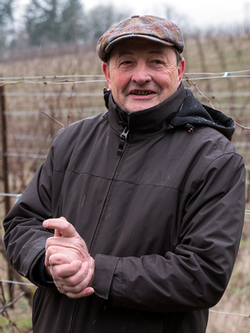
What are you drinking at home these days?
"If I could get enough, I would drink the 2016 Bunker Hill Chardonnay, one of my favorite Chardonnays we've produced. Because many of the Lingua Franca Chardonnays are made in limited quantities and there is often such a high demand, I often find myself drinking White Burgundies (it happens I have quite a few bottles!). In the spring and summer, I switch to drinking Riesling, German or Alsatian, and sometimes Chenin Blanc. But I cannot live without Pinot Noir, which represents about 80% of my red wine consumption!"
Tune in Saturday, July 18th at 11:00 am (PST) to hear Dominique participate in a webinar moderated by New York Times Wine Critic, Eric Asimov. Click here for more details.
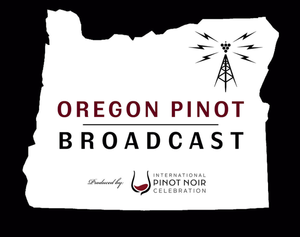
Sam's Pan Roasted Pork Tenderloin with Marsala Mushroom Risotto Recipe
Ingredients (Serves 4):
-
1 Whole Pork Tenderloin (about 2-2 ½ lbs)
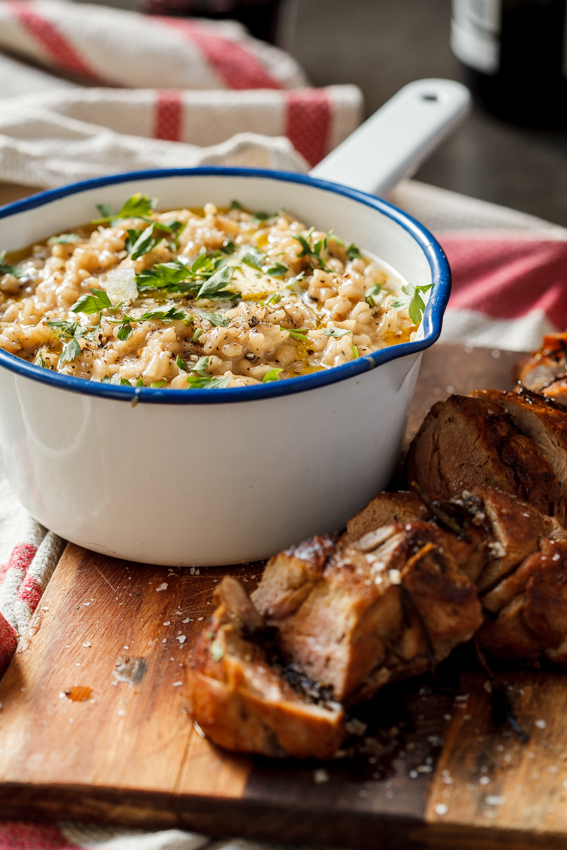
-
3 Tablespoons Canola Oil
-
1 Cup Arborio or Carnaroli Rice
-
1 Cup Dry White Wine (Avni Chardonnay works great!)
-
4 Cups Chicken Stock
-
1 Cup Sweet Marsala Wine
-
10 ounces of Baby Portabella, Shitake, or Crimini Mushrooms brushed, Stemmed and Sliced
-
3 Tablespoons Olive Oil
-
1 ½ Teaspoons Fresh Thyme, Finely Chopped
-
1 Tablespoon Chives, Finely Chopped
-
2 Cloves Garlic, Finely Chopped
-
1 Shallot, Finely Chopped
-
1 Cup Freshly Grated Parmigiano-Reggiano Cheese
-
2 Teaspoons Kosher Salt
-
1 ½ Teaspoons Fresh Ground Black Pepper
-
5 Tablespoons Cold Unsalted Butter, Diced Into Cubes
-
Additional Salt and Pepper to taste
Preparation:
-
Pre-heat oven to 375℉
-
Mix the white wine and chicken stock in a medium sauce pan and warm over medium heat to a slight simmer.
-
Remove the silver skin from the pork tenderloin and pat it dry with a paper towel. Mix the salt and pepper in a small bowl and use it to coat the tork tenderloin as evenly as possible on all sides.
-
For the risotto: put the olive oil in a large sauce pan and turn the burner to medium heat. When the oil begins to shimmer, add the shallot and sauté for 2 minutes or until soft and translucent. Do not let the edges burn or turn brown. Add the rice to the pan and mix with the shallot and oil to coat. Sauté for 3 - 4 minutes stirring gently but constantly to avoid burning until the rice starts to produce a slightly nutty aroma. Add enough of the warm chicken stock and wine mixture to just cover the rice and stir to mix. Set the heat level to medium low and let the rice simmer.
-
Check the rice every 5 minutes or so by running a spatula through the center of the pan. When the rice divides and doesn't immediately fill the space made by the spatula, add another dose of the stock mixture to just cover the rice and give it a few stirs to incorporate. Repeat this step until the stock is used up and the rice is tender.
-
For the pan roasted pork: While the rice is cooking, put 2 tablespoons of canola oil in a cast iron skillet or heavy steel sauté pan and set the burner to high. When it the oil begins to shimmer, carefully add the pork tenderloin to the pan — it may smoke a bit so make sure your vent hood is running. Let the meat sear for 2-3 minutes, until it releases from the pan without tearing its surface, and rotate a quarter turn. Repeat this two more times to brown the meat on all four sides. When you turn the meat the third time (on the fourth side) carefully put a probe thermometer through the end of the tenderloin as level as you can to the middle of the meat and put the pan in the oven to roast. Remove the tenderloin from the oven when the thermometer reads 145℉ and cover lightly with aluminum foil for 5-10 minutes to let the meat rest.
-
For the Marsala mushrooms: while the meat is roasting in the oven, combine 2 tablespoons of butter and the remaining tablespoon of olive oil in a large non-stick skillet and heat over medium-high until the butter is melted and foamy. Add the sliced mushrooms to the pan and sauté for about 5 minutes until the mushrooms start to brown and shrink slightly. Turn the heat down to medium and add 1 teaspoon of chives, thyme and garlic along with the remaining tablespoon of butter to the skillet and stir to combine with the mushrooms. Continue to stir the mushrooms every few minutes. When the mushrooms are uniformly brown and most of the oil has been soaked up, remove from the heat and add the Marsala wine. Stir to deglaze the pan and coat the mushrooms. Return to medium-low heat and stir gently until the marsala is mostly absorbed into the mushrooms.
-
If the last dose of broth has been incorporated into the risotto, add the mushroom mixture directly to the risotto and stir to combine. If not, move the mushroom mixture to a bowl and cover to hold temporarily and then add it to the risotto when the last dose of stock has been absorbed.
-
Remove the risotto from the heat and add the Parmigiano-Reggiano to the risotto and stir to incorporate. Then add the cold butter, one cube at a time and stir it into the risotto until it is melted and mixed in. Add salt and pepper to taste.
-
Slice the tenderloin into 1 1/2 to 2 inch portions. Put a large serving spoon or two full of risotto onto a plate and place a portion (or two) of tenderloin on top. Turn a few grinds of black pepper over each serving and garnish with the remaining chives.
Photo Credit: Simply Delicious
Cellar Master Joe's BBQ Dry-Rub Recipe
|
Meet the Team, Part Seven
Meet
Joe Ferris
Cellar Master
Born and raised in Wisconsin, Joe spent several years working as a biomedical engineer in Los Angeles; however, his travels to wine country on the West Coast and abroad motivated him to rethink his path in life. After working a harvest in Paso Robles, Joe fell in love with winemaking and made the decision to switch careers. He went back to school to earn a viticulture and enology master’s degree at UC Davis, and after graduating he worked harvests on the Sonoma Coast as well as abroad in Germany and New Zealand. Upon returning stateside, Joe put down roots in the Willamette Valley and joined our winemaking team in 2018 as Cellar Master.
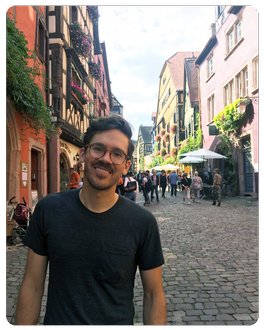
What were you doing before you got into the wine industry?
"Prior to switching careers, I was working as a biomedical engineer at a medical device company in Los Angeles, CA. To be a little more specific, I provided pacemaker and implantable cardioverter-defibrillator (ICD) technical support for our sales team, physicians, and patients. During this time, I was also accepted into medical school in Chicago. My partner (now wife) Molly and I were enjoying the West Coast, traveling to wine regions and enjoying the great outdoors. I was at a crossroads in my life, and I did a lot of reflecting and meditating on my career choices and my work-life dynamic. In the end, I made the decision to turn down a career in medicine in order to pursue a lifestyle that combines science, art, family and community... wine!"
What was your ‘epiphany’ wine and do you remember that moment? "Not to side-step this question, but I don’t really have an “ah-ha” wine that sent me on this path. Instead, I would say that I was captivated by a specific wine region during one of my international harvest internships: the Pfalz region of Germany, which is known for their amazing dry Rieslings. While working at Weingut Pflüger (a multi-generational winemaking family) in Bad Dürkheim, I witnessed first-hand how wine and community are intertwined. We ate and drank wine every lunch with family and friends, served wine spritzers at a stand at Wurstmarkt, the world’s largest wine festival, and joined in on many of the other local festivities. I did also, of course, drink some spectacular Rieslings from some historic vineyards in the area, such as Pechstein and Kirchenstück."
What do you like doing outside of work?
"I enjoy spending time with my wife Molly and our newly adopted pup named Sir Felton John, cooking, and drinking good wine with friends. It’s a bit dorky, but I also love to read viticulture and enology research papers, and I'm part of a journal club that meets regularly."
What are you enjoying drinking these days?
"My wife and I have been really into Italian wines, specifically Nebbiolo from Valtellina; these wines are bright, floral, and elegant... and much cheaper than their cousins in Barolo and Barbaresco. I've also been digging the “newish” trend of canned cocktails to kick off the summer patio sessions, with the Apicco Spritz from Straightaway Cocktails here in Portland as one of my faves."
Larry Stone's Duck Recipe
This recipe is quite simple and perfect for a wide range of Pinot Noirs and terrific with complex or mature wines as the seasoning subtly enhances the flavors of the dish rather than fighting them. My version below was adapted from Liberty Duck Farm’s recipe.
Purchase a high-quality, plump duck breast - one per person. I buy them online from D'Artagnan and when I lived in Northern California, I purchased them fresh from Liberty Ducks in Sonoma. If there is a good local farm with fresh duck, buy from them.
My recipe is very easy - duck is so flavorful that not much needs to be done.
Ingredients:
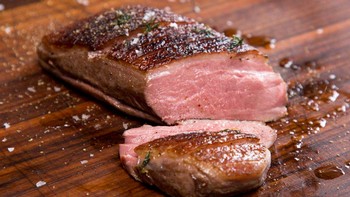
-
High-quality, plump duck breast - one per person (see notes above)
-
Canola or Grapeseed Oil
-
Cardamom
-
Salt & Pepper
Preparation:
I rinse and dry the duck, trim the fat cap at the edges to fit nicely on the meat surface and not hang over. I salt lightly all over, make parallel diagonal slits across the surface of the fat, about 5mm apart. This cuts the surface of the skin and allows the fat to render without curling.
Then coat the duck all over with ample ground cardamom. Air dry it with a fan for around 20 minutes so that the meat and fat are very dry on the surface. Air drying prevents some sticking to the pan and prevents some loss of meat juices.
Take a hot aluminum, cast iron or high-quality stainless-steel skillet or sauté pan (not non-stick) of sufficient size that allows for ample room for each breast. Pre-heat on stove. When hot, drop a little grapeseed or canola oil on the surface of the pan and spread it around by rotating the pan in a circular motion. It should be just enough so that the duck will not stick to the pan before rendering its fat.
Lay the breasts skin side down in the pan. Move breasts around frequently when first getting them in the pan to avoid their sticking. After a few minutes and when the fat starts to render and the skin begins to brown, turn the heat to a medium to medium-high temperature depending upon how hot your range burns. Too hot and the skin will burn, lower is better to have time to let the fat render and leave a thin tasty layer of fat on the breast with a crispy brown to dark black surface.
The idea is to render the fat without overcooking the meat. One could have a can on the side to dump excess duck fat as it melts, but that would be a waste. As the fat renders and starts to build up in the pan, pour the excess fat into a glass container that can be sealed. It may be necessary to go through this a couple of times before the duck is done. This duck fat is delicious to fry potatoes with, collard or mustard greens, broccoli rabe or anything that you may want to cook with bacon fat. It can be frozen and stored for months or kept in the refrigerator for several weeks. This fat will also have a subtle flavor of cardamom.
When the skin becomes dark mahogany-colored and the meat appear to have cooked almost halfway up the side of the breast, then turn over the breasts and finish frying them in a few minutes. If you like your duck breast rare, let it only seem to begin to cook up the sides (you can tell by the change in color of meat from dark red to a brownish white) and then sear meat side down for only a couple of minutes.
Eat the lean slices of duck breast together with the layer of crisp fragrant fat, which tastes and smells a lot like an elevated type of bacon. The combination of the meat and cardamom used as a savory spice is quite compelling with Lingua Franca Estate Pinot Noir, The Plow, or Mimi's Mind. Enjoy!
